Changes done to move from Colonial Past
Description
Description:
Step into the transformation of modern India as it casts off the vestiges of
its colonial past. This article highlights the significant changes and
initiatives taken by the Indian government to redefine the nation's identity.
From renaming iconic landmarks to embracing Indian languages and culture,
discover the journey towards a truly independent and empowered India. Explore
how historical literary works banned during British rule are being revived, and
colonial-era practices are being replaced by more culturally rich traditions.
Join India on its path to self-discovery and progress.
Changes done to move from Colonial Past
The history of modern India is deeply entangled with two centuries of
British colonialism, and decades after Independence, our nation has continued
to carry its colonial baggage in various forms, some conspicuous, and some
subtle. Over the past few years, the Government has slowly been steering India
away from these vestiges of British rule, and a number of steps have been taken
across several domains to firmly mark the identity of New India, truly freeing
it from its colonial past.
Rajpath Renamed
Kartavya Path
In line with his resolve for New India in Amrit Kaal to ‘remove any trace of colonial mindset’, Prime Minister has inaugurated the 'Kartavya Path' in New Delhi. This change in nomenclature symbolises a shift from erstwhile Rajpath being an icon of power to the Kartavya Path being an example of public ownership and empowerment.
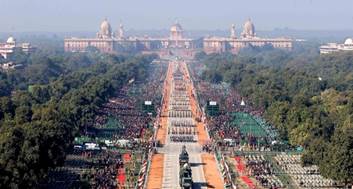
Statue of Netaji
Subhas Chandra Bose Installed at India Gate
A huge statue of the national hero and freedom fighter, Netaji Subhas Chandra Bose, has been installed near India Gate, replacing the statue of King George V which stood there. “At the time of slavery, there was a statue of the representative of the British Raj. Today the country has also brought to life a modern, strong India by establishing the statue of Netaji at the same place.
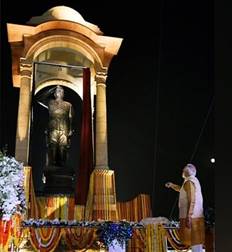
New Naval Ensign
marking a departure from the colonial past
The previous ensign carried the Saint George’s Cross and was a successor to the pre-Independence ensign which had the red Cross on a white background with the Union Jack of the United Kingdom on the top left corner. The new ensign comprises two main constituents - the National Flag in the upper left canton, and a Navy Blue - Gold octagon at the centre of the fly side (away from the staff). The Prime Minister dedicated the Ensign to Chhatrapati Shivaji Maharaj, who built a strong navy to secure the maritime borders, thus symbolizing the indigenous might of India.
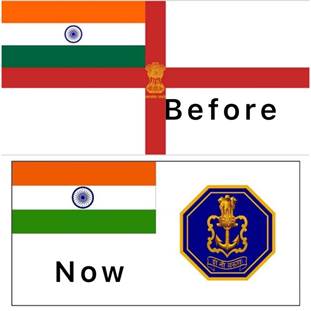
Tunes with
Indian fervour at the “Beating the Retreat” Ceremony
During Republic Day celebrations of 2022, a number of new tunes were added to the ‘Beating the Retreat’ ceremony to celebrate ‘Azadi ka Amrit Mahotsav’. These include ‘Kerala’, ‘Hind ki Sena’ and ‘Ae Mere Watan Ke Logon’. The event came to a close with the ever-popular tune of ‘Sare Jahan se Acha’. Indian musical instruments such as sitar, santoor, and tabla have also been added to the music ensemble. The retreat has thus been infused with an Indian flavour and patriotic fervour, to enable greater connect with the citizens.
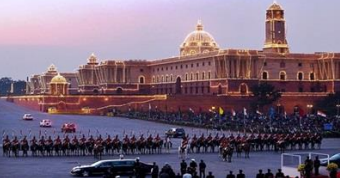
Construction of
National War Memorial (NWM) and merger of flames of Amar Jawan Jyoti and NWM
Constructed by the British to commemorate soldiers who lost their lives fighting for the British in World War I, the India Gate (earlier known as the All India War Memorial) is a symbol of India’s colonial past. To mark India’s victory over Pakistan in the 1971 War, the Amar Jawan Jyoti was subsequently added at the above location as an ad-hoc arrangement, as the country did not have another memorial for Indian soldiers killed in wars. The National War Memorial, as a symbol of independent India, was inaugurated and dedicated to the Nation. It houses the names of all Indian martyrs from all the wars, including 1971 and wars before and after it. The NWM is thus a memorial for all soldiers who have either laid down their lives or will do so in the future in the service of independent India. Since its inauguration, all homage and remembrance ceremonies are being conducted only at the NWM, including those on National Days. In the presence of a National War Memorial, it was therefore considered appropriate to shift the eternal flame to this new location as it is an appropriate tribute to have the flame stand in honour of all bravehearts.
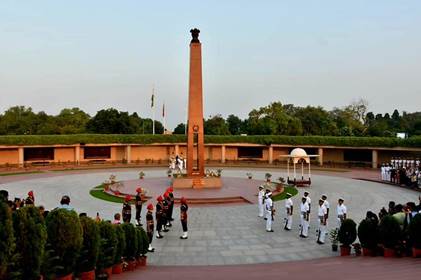
Andaman and Nicobar Islands Renamed
On December
30, 2018, marking the 75th anniversary of the hoisting of Tricolour
on Indian soil by Netaji Subhas Chandra Bose, Prime Minister Narendra Modi
announced that Ross Island would be renamed Netaji Subhas Chandra Bose
Dweep; Neil Island would be known as Shaheed Dweep; and
Havelock Island would be renamed as Swaraj Dweep. These islands had
been named after the British rulers even in independent India. The Government
erased these signs of slavery by giving them Indian names and Indian identity.
Railway
Budget merged with annual Union Budget
In yet
another departure from British era practices, the Government merged the
Rail Budget with the Union Budget from budget year 2017-18. The
Railway Finances had been separated from General Finances in 1924 following the
recommendations of the Acworth Committee (1920-21).
Revival of literary works banned during British rule
During India's struggle for Independence, many revolutionary pieces of
literature were banned by the British Government, as these were considered
'dangerous' to the 'security' of their rule in India. This body of literature
aimed at arousing patriotic feelings in the minds of the people and invoking
them to rise up to free India. As part of the Azadi ka Amrit Mahotsav
celebrations, the Government has identified poems, writings and publications
that the British Raj banned and put them together as a catalogue published by
the National Archives of India. These unique collections, representing the
feelings, aspirations and resolves of our freedom fighters, are available in
various Indian languages.
Other Initiatives taken to Remove Colonial Vestiges:
• The Government has renamed certain key roads whose original names were iconic to the British era.
The Race Course Road in Lutyen’s Delhi was renamed to Lok Kalyan Marg in 2016. Prime Minister's famous residential address 7, Race Course Road thus became 7, Lok Kalyan Marg.
In 2017, Dalhousie Road was renamed Dara Shikoh Road.
• In 2019, Finance Minister Nirmala Sitharaman broke away from a long-standing colonial era practice when she opted for the traditional Indian ‘Bahi Khata’ rather than the briefcase while presenting the Union Budget. The time and date of the presentation of the Indian Budget, which was following the times of the British Parliament for so many decades, have also been changed.
• The youth of the country are being liberated from the compulsion of learning in foreign language through the National Education Policy, which lays stress on education in the mother tongue.
• In the last eight years, the Government has repealed more than 1,500 archaic laws, most of which were remnants of the colonial British era.
Here is link to an article - Empowering the Adivasis of India

